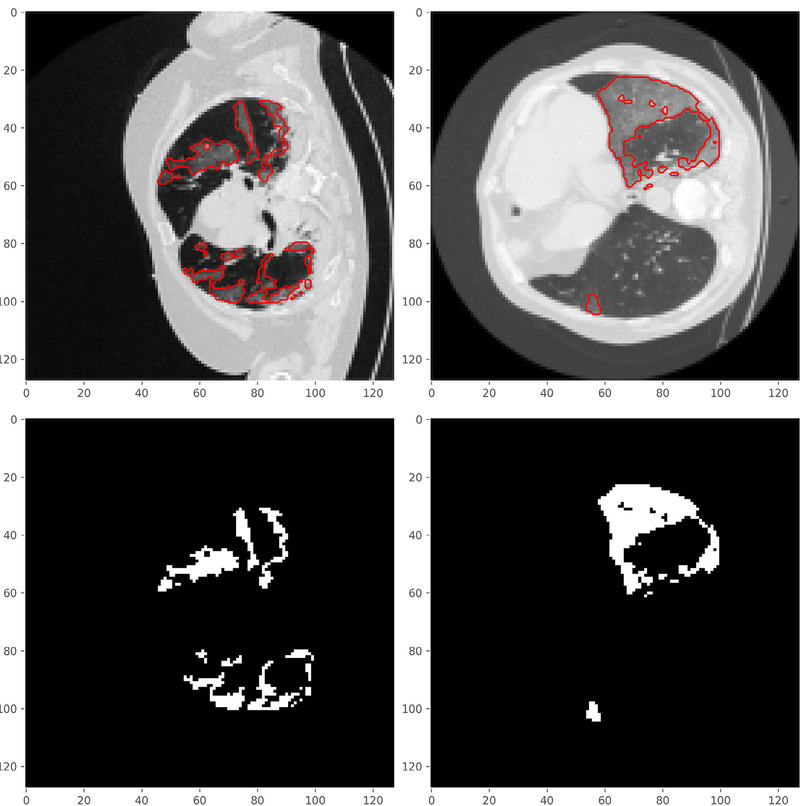COVID TV-Unet

COVID TV-Unet: Segmenting COVID-19 chest CT images using connectivity imposed Unet
The novel corona-virus disease (COVID-19) pandemic has caused a major outbreak in more than 200 countries around the world, leading to a severe impact on the health and life of many people globally. By October 2020, more than 44 million people were infected, and more than 1,000,000 deaths were reported. Computed Tomog- raphy (CT) images can be used as an alternative to the time-consuming RT-PCR test, to detect COVID-19. In this work we propose a segmentation framework to detect chest regions in CT images, which are infected by COVID-19. An architecture similar to a Unet model was employed to detect ground glass regions on a voxel level. As the infected regions tend to form connected components (rather than randomly distributed voxels), a suitable regularization term based on 2D-anisotropic total-variation was developed and added to the loss function. The proposed model is therefore called ”TV-Unet ”. Experimental results obtained on a relatively large-scale CT seg- mentation dataset of around 900 images, incorporating this new regularization term leads to a 2% gain on overall segmentation performance compared to the Unet trained from scratch. Our experimental analysis, ranging from visual evaluation of the predicted segmentation results to quantitative assessment of segmentation performance (precision, recall, Dice score, and mIoU) demonstrated great ability to identify COVID-19 associated regions of the lungs, achieving a mIoU rate of over 99%, and a Dice score of around 86%.
paper:Elsevier
